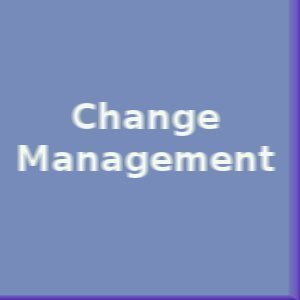Someone who has worked in a corporation or with a large organization might have heard the phrase “change management” used from time to time. Change management has been around for a while, but has become extremely popular with organizations or corporations that would like to initiate significant change to processes that can include both work tasks and culture.
Change management can be defined as a set of processes that is employed to ensure that significant changes are implemented in an orderly, controlled, and systematic fashion to effect organizational change. One of the goals of change management is with regards to the human aspects of overcoming resistance to change in order for organizational members to buy into change and achieve the organization’s goal of an orderly and effective transformation.
The ADKAR Model
Change management has been developed over a period of time and one of the models that has played an influence in change management is the ADKAR model. Procsi developed the ADKAR model. In this model, there are five specific stages that must be realized in order for an organization or an individual to successfully change. They include:
- Awareness – An individual or organization must know why a specific change or series of changes are needed.
- Desire – Either the individual or organizational members must have the motivation and desire to participate in the call for change or changes.
- Knowledge – Knowing why one must change is not enough. An individual or organization must know how to change.
- Ability – Every individual and organization that truly wants to change must implement new skills and behaviors to make the necessary changes happen.
- Reinforcement – Individuals and organizations must be reinforced to sustain any changes. If not, an individual or organization will probably revert to their old behavior.
Organizational Change Management
Organizational change management takes into consideration both the processes and tools that managers use to make changes at an organizational level. Most organizations want change implemented with the least resistance and with the most buy-in as possible. For this to occur, change must be applied with a structured approach so that transition from one type of behavior to another will be smooth.
Management’s Role in the Organizational Change
In most cases, management’s first responsibility is to identify processes or behaviors that are not proficient and come up with new behaviors, processes, etc. that are more effective. Once changes are identified, it is important for managers to estimate the impact that they will have on the organization and individual employee on many levels including technology, employee behavior, work processes, etc.
At this point management should assess the employee’s reaction to an implemented change and try to understand the reaction to it. In many cases, change can be extremely beneficial. However, certain changes sometimes produce a tremendous amount of resistance. It is management’s job to help support workers through the process, which is at times very difficult. The end result is that management must help employees accept change and help them become well adjusted and effective once these changes have been implemented.
The Importance of “Buy In”
For an individual or organization to achieve change effectively, it is important that individuals in the organization who need to make modifications to their behavior exhibit “buy in.” “Buy in” means that the organization as a whole understands that the changes that need to be made are ultimately beneficial to both the individual and the organization. In addition, each individual and the organization as a whole have to work hard to make the necessary behavior modifications. If an organization tries to make changes that are inherently bad or that the organization does not receive positively, it will be much more difficult or close to impossible to implement these changes without significant resistance.
Organizations can enhance “buy in” by first explaining the changes to be made, citing issues with current procedures and then communicating the benefits for both the individual and organization.




Follow Us!